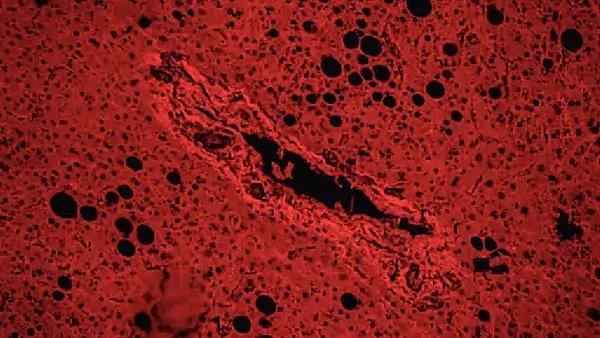Can Intermittent Fasting Reverse NAFLD?

A Promising Approach to Fatty Liver Management
Non-alcoholic fatty liver disease (NAFLD) is a prevalent condition affecting millions worldwide, characterized by an excess accumulation of fat in the liver unrelated to alcohol consumption. With no definitive pharmacological treatment currently available, dietary and lifestyle interventions remain the cornerstone of management. Among these, intermittent fasting (IF) has emerged as a potential strategy. But can intermittent fasting reverse NAFLD? This article delves into the mechanisms, evidence, and considerations surrounding this intriguing approach.
Understanding NAFLD: A Metabolic Condition with Systemic Implications
NAFLD encompasses a spectrum ranging from simple hepatic steatosis (fatty liver) to non-alcoholic steatohepatitis (NASH), which involves liver inflammation and fibrosis. Progression of NASH can lead to cirrhosis, liver failure, or hepatocellular carcinoma. The disease is closely linked to metabolic syndrome, insulin resistance, obesity, and type 2 diabetes mellitus.
Treatment focuses on addressing these underlying metabolic disturbances, primarily through lifestyle modifications like weight loss, dietary adjustments, and physical activity. Emerging evidence suggests that intermittent fasting, which structures eating and fasting windows, may offer metabolic and hepatic benefits.
Intermittent Fasting: Mechanisms Relevant to Liver Health
Intermittent fasting refers to an eating pattern that alternates between defined periods of fasting and eating. Popular methods include time-restricted feeding (e.g., 16:8 or 14:10 schedules) and alternate-day fasting. These regimens induce a metabolic state known as fasting ketosis, characterized by a shift from glucose to fat as the primary energy source. This transition may significantly impact NAFLD management through the following mechanisms:
- Reduction in Hepatic Lipid Accumulation: Prolonged fasting reduces glycogen stores, prompting the liver to mobilize fat for energy. This decreases hepatic lipid content, a hallmark of NAFLD.
- Improved Insulin Sensitivity: Insulin resistance is a primary driver of NAFLD. Intermittent fasting enhances insulin sensitivity, reducing the risk of hepatic fat accumulation.
- Decreased Systemic Inflammation: Chronic low-grade inflammation exacerbates NAFLD progression. IF may lower pro-inflammatory cytokines, thereby mitigating liver inflammation.
- Weight Reduction and Caloric Deficit: Intermittent fasting inherently creates a caloric deficit, facilitating weight loss—a proven method to improve NAFLD.
- Enhanced Autophagy: Fasting stimulates autophagy, a cellular process that clears damaged organelles and promotes cellular repair. This may counteract liver cell injury in NAFLD.
Recent studies have also highlighted that intermittent fasting activates key signaling pathways such as AMPK (AMP-activated protein kinase), promoting fatty acid oxidation and reducing de novo lipogenesis through decreased expression of SREBP-1c (sterol regulatory element-binding protein 1c). These molecular mechanisms contribute significantly to hepatic recovery during fasting periods.
Clinical Evidence Supporting Intermittent Fasting in NAFLD
Human Studies on IF and Fatty Liver
Recent clinical studies have highlighted the benefits of intermittent fasting for individuals with NAFLD:
- Improved Liver Enzymes: Trials have demonstrated reductions in alanine aminotransferase (ALT) and aspartate aminotransferase (AST), markers of liver damage, among participants following intermittent fasting protocols.
- Reduction in Liver Fat Content: Magnetic resonance imaging (MRI) studies show decreased hepatic fat levels in individuals practicing time-restricted feeding, even without significant weight loss.
- Metabolic Benefits: Improvements in insulin resistance, lipid profiles, and markers of oxidative stress have been observed, all of which contribute to better liver health.
Animal Studies and Mechanistic Insights
Preclinical studies provide additional insights into how IF benefits the liver:
- Rodent Models: Mice subjected to intermittent fasting showed reductions in hepatic steatosis and inflammation, with increased expression of genes involved in fatty acid oxidation.
- Liver Fibrosis: Experimental data suggest that intermittent fasting may also slow or prevent the progression of fibrosis by reducing oxidative stress and profibrotic signaling pathways.
Key Considerations for Adopting Intermittent Fasting in NAFLD
While intermittent fasting holds promise, its implementation should be individualized and medically supervised, particularly for individuals with advanced liver disease or comorbidities.
Safety Concerns and Potential Risks
- Risk of Hypoglycemia: Patients on glucose-lowering medications or with diabetes must adjust their regimens to avoid hypoglycemia during fasting periods.
- Nutritional Adequacy: Ensuring adequate intake of essential nutrients during eating windows is crucial, as restrictive patterns may lead to deficiencies.
- Sustainability: The long-term adherence to intermittent fasting regimens varies, emphasizing the importance of tailoring approaches to individual preferences and lifestyles.
Special Populations
- Advanced NAFLD/NASH: Patients with cirrhosis or significant fibrosis should consult hepatology specialists before adopting intermittent fasting.
- Comorbid Conditions: Those with conditions like type 2 diabetes or cardiovascular disease should work closely with their healthcare providers to integrate IF safely.
Combining Intermittent Fasting with Dietary Interventions
Maximizing the benefits of intermittent fasting involves combining it with a nutrient-dense diet tailored to liver health. Key dietary recommendations include:
- High-Fiber Foods: Whole grains, legumes, fruits, and vegetables support gut health and reduce systemic inflammation.
- Healthy Fats: Omega-3 fatty acids, found in fatty fish and flaxseeds, combat inflammation and improve lipid metabolism.
- Low Glycemic Index Foods: Minimizing high-GI foods helps maintain stable blood sugar levels, reducing the risk of hepatic fat accumulation.
- Avoidance of Processed Foods: Eliminating trans fats, added sugars, and ultra-processed products is essential for managing NAFLD.
How Intermittent Fasting Fits Into Current Guidelines
Although specific guidelines for intermittent fasting in NAFLD management are lacking, its benefits align with broader recommendations for weight loss and metabolic improvement. Both the American Association for the Study of Liver Diseases (AASLD) and European Association for the Study of the Liver (EASL) emphasize lifestyle interventions as first-line therapy for NAFLD. Emerging evidence supports incorporating IF as a viable strategy within these frameworks.
Future Directions and Research Needs
The current evidence on intermittent fasting and NAFLD is promising but still evolving. Large-scale randomized controlled trials are necessary to establish:
- The most effective fasting protocols for NAFLD reversal.
- Long-term safety and adherence rates.
- Impact on advanced liver disease stages.
- Synergistic effects of IF with pharmacological or surgical interventions.
Ongoing research will clarify these aspects and refine IF-based approaches to liver health.
Conclusion
While intermittent fasting is not a cure for NAFLD, it represents a powerful tool to address its underlying causes such as insulin resistance, obesity, and systemic inflammation. By promoting weight loss, reducing hepatic fat, improving metabolic health through mechanisms like AMPK activation and autophagy enhancement, intermittent fasting offers a promising adjunctive approach to reversing NAFLD. However, its adoption must be individualized, medically supervised, and combined with a liver-healthy diet for optimal results.
For more detailed information on this topic visit Nature.
Share this article

Dr. Jan Catherine Carrera, MD
I am a Board-Certified Internist specializing in Adult Medicine with a subspecialty in Gastroenterology, focusing on diseases of the esophagus, liver... See Full Bio.
-
1. Méndez-Sánchez N, et al. Global multi-stakeholder endorsement of the MAFLD definition. Lancet Gastroenterol Hepatol, 2022.
-
2. Titchenell PM, et al. Hepatic insulin resistance and NAFLD. Trends Endocrinol Metab, 2020.
-
3. Feng D, et al. Time-restricted feeding for the prevention and treatment of metabolic diseases. J Clin Invest, 2021.
-
4. Eslam M, et al. The clinical spectrum of NAFLD: current and future challenges. Nat Rev Gastroenterol Hepatol, 2020.
-
5. Mizrahi M, Shabat Y, Ben Ya'acov A, Lalazar G, Adar T, Wong V, et al. Alleviation of insulin resistance and liver damage by oral administration of Imm124-E is mediated by increased Tregs and associated with increased serum GLP-1 and adiponectin. J Inflamm Res, 2022.
-
6. Marjot T, Moolla A, Cobbold JF, Hodson L, Tomlinson JW. Nonalcoholic Fatty Liver Disease in Adults: Current Concepts in Etiology, Outcomes, and Management. Endocr Rev, 2023.
-
7. Harvie M, Wright C, Pegington M, McMullan D, Mitchell E, Martin B, et al. The effect of intermittent energy and carbohydrate restriction v. daily energy restriction on weight loss and metabolic disease risk markers in overweight women. Br J Nutr, 2023.
-
8. Musso G, Cassader M, Gambino R. Non-alcoholic fatty liver disease: Emerging driving forces and potential therapeutic targets. Nat Rev Drug Discov, 2024.
The Role of Soluble Fiber in Liver Recovery Soluble fiber plays a critical role in liver recovery, particularly in the context of non-alcoholic fatty liver disease...
The Role of Insulin Resistance in MAFLD Metabolic dysfunction-associated fatty liver disease (MAFLD), formerly known as non-alcoholic fatty liver disease...
Fatty Liver Disease Prevention Risk Calculator Fatty liver disease has emerged as a silent epidemic in modern society, affecting millions of people worldwide.

You might enjoy more articles by
Dr. Jan Catherine Carrera, MD
 Disease
Disease Diets
Diets Recipes
Recipes Supplements
Supplements Management
Management Calculators
Calculators Quizzes
Quizzes Glossary
Glossary


















